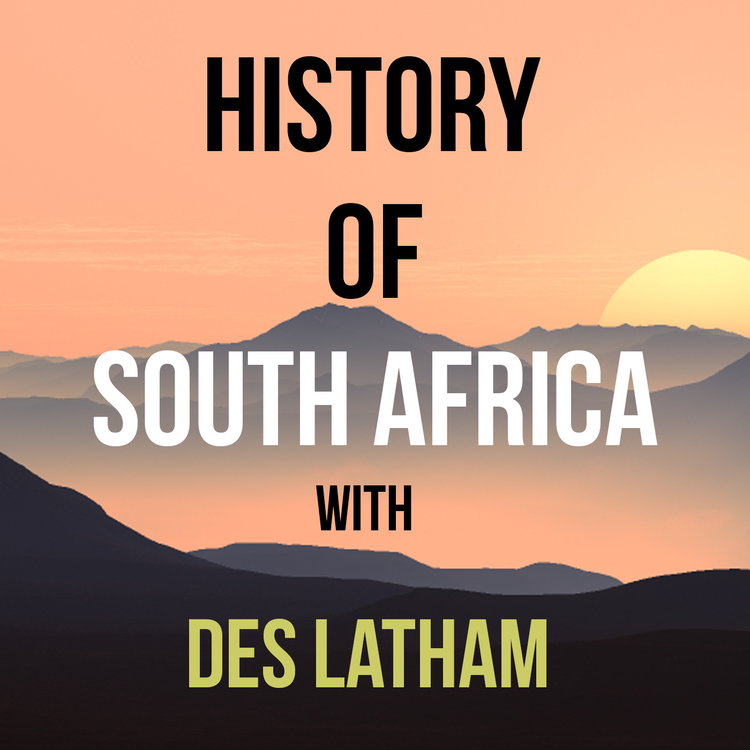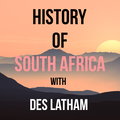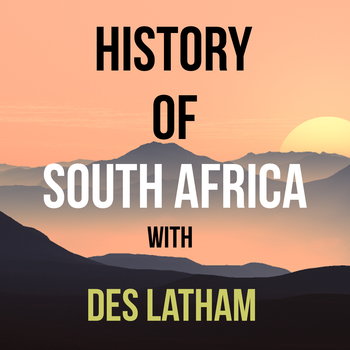
Episode 134 - Lightning kills 12 Boer horses then the wizards die
Loading player...
This is episode 134 - and its going to be a massacre.
It is also crucial as you’ve heard that we dig deep into the events because today there’s a huge debate about what I’m going to explain next, what documents still exist about what happened, and who owns what when it comes to land in South Africa.
Specifically, land in KwaZulu Natal.
What exactly did Dingane agree to sell to Piet Retief? Why did he agree to do this when he had told the missionaries and his own people that he wouldn’t part with land at all?
It’s incredible to think that this one year, 1838, has sparked so much discussion — and that people today quote one fact after another to back up their political position on this matter.
So to the story at hand.
Piet Retief had struggled to hold the Voortrekkers together when he’d arrived back at the main trekker encampment at Doornkop. Piet Uys had arrived from the Highveld on the 15th December 1837, having heard that Retief’s visit to the AmaZulu king had gone well and he brought news of just how decisively amaNdebele chief Mzilikazi had been dealt with.
Uys was also reclaiming his leadership role over the Voortrekkers of Natal which didn’t go down well with Retief. Gerrit Maritz was his usual refereeing self interjecting between the two, and Uys agreed on the 19th December and after four days of argument to take the oath of the constitution to support Retief’s vision, but only after he consulted with his Volk, his followers.
These followers were on their way down the Drakensberg. It one of the life’s ironies that by the time he arrived back in Natal on the 24th January 1838, Uys had completely changed his tune. IT was on that date that he dictated a letter to Governor D’Urban back in Cape Town to the effect that he was now totally against Retief’s “sinister designs…” — and I’m quoting directly.
Sinister designs? Over what?
Retief it appeared and as we know was true, was planning to launch an independent state in Natal and Uys in what could be called a giant stab in the back, wrote to the British governor that he and his Volk were actually reaffirming their loyalty to the Crown. The English crown.
Retief of course was heading to the upper reaches of the Caledon valley on a quest ordered by Dingana to retrieve cattle stolen by the baTlokwa from the amaHlubi.
By inference, Dingana wanted Sekhonyela to pay for his transgressions and the Boers believed he was testing their somewhat flimsy relationship. Retief believed that the goodwill that would be generated by returning the cattle would lead to Dingana handing over some of that precious land controlled by the AmaZulu king.
He wrote a letter to Dingana informing the Zulu king of the successful raid on his enemy, the baTlokwa. By now, Dingana had almost gone into shock about something else. On the 2nd January he’d been informed by Owen the missionary about Mzilikazi’s fate and the utter thrashing he’d received at eGaneni, how his people had fractured and the erstwhile leader of the Khumalo clan had fled across the Limpopo River.
Another enemy, dispatched by the Boers, the Zulu had failed to defeat this man, but not the boers.
IT was the 25th January when the Trekkers gathered and prayed for protection, then a few days later, the party of 100 rode out with the cattle, and the 15 Zulu attendants including two indunas.
Piet Retief wrote his last letter to his wife on the trail to emGungungdlovu.
“I was deeply affected at the time of my departure … It was in no way that I feared for my undertaking to go to the king but I was full of grief that I must again live through the unbearable dissension in our Society, and that made me feel that God’s kindness would turn to wrath…”
It is also crucial as you’ve heard that we dig deep into the events because today there’s a huge debate about what I’m going to explain next, what documents still exist about what happened, and who owns what when it comes to land in South Africa.
Specifically, land in KwaZulu Natal.
What exactly did Dingane agree to sell to Piet Retief? Why did he agree to do this when he had told the missionaries and his own people that he wouldn’t part with land at all?
It’s incredible to think that this one year, 1838, has sparked so much discussion — and that people today quote one fact after another to back up their political position on this matter.
So to the story at hand.
Piet Retief had struggled to hold the Voortrekkers together when he’d arrived back at the main trekker encampment at Doornkop. Piet Uys had arrived from the Highveld on the 15th December 1837, having heard that Retief’s visit to the AmaZulu king had gone well and he brought news of just how decisively amaNdebele chief Mzilikazi had been dealt with.
Uys was also reclaiming his leadership role over the Voortrekkers of Natal which didn’t go down well with Retief. Gerrit Maritz was his usual refereeing self interjecting between the two, and Uys agreed on the 19th December and after four days of argument to take the oath of the constitution to support Retief’s vision, but only after he consulted with his Volk, his followers.
These followers were on their way down the Drakensberg. It one of the life’s ironies that by the time he arrived back in Natal on the 24th January 1838, Uys had completely changed his tune. IT was on that date that he dictated a letter to Governor D’Urban back in Cape Town to the effect that he was now totally against Retief’s “sinister designs…” — and I’m quoting directly.
Sinister designs? Over what?
Retief it appeared and as we know was true, was planning to launch an independent state in Natal and Uys in what could be called a giant stab in the back, wrote to the British governor that he and his Volk were actually reaffirming their loyalty to the Crown. The English crown.
Retief of course was heading to the upper reaches of the Caledon valley on a quest ordered by Dingana to retrieve cattle stolen by the baTlokwa from the amaHlubi.
By inference, Dingana wanted Sekhonyela to pay for his transgressions and the Boers believed he was testing their somewhat flimsy relationship. Retief believed that the goodwill that would be generated by returning the cattle would lead to Dingana handing over some of that precious land controlled by the AmaZulu king.
He wrote a letter to Dingana informing the Zulu king of the successful raid on his enemy, the baTlokwa. By now, Dingana had almost gone into shock about something else. On the 2nd January he’d been informed by Owen the missionary about Mzilikazi’s fate and the utter thrashing he’d received at eGaneni, how his people had fractured and the erstwhile leader of the Khumalo clan had fled across the Limpopo River.
Another enemy, dispatched by the Boers, the Zulu had failed to defeat this man, but not the boers.
IT was the 25th January when the Trekkers gathered and prayed for protection, then a few days later, the party of 100 rode out with the cattle, and the 15 Zulu attendants including two indunas.
Piet Retief wrote his last letter to his wife on the trail to emGungungdlovu.
“I was deeply affected at the time of my departure … It was in no way that I feared for my undertaking to go to the king but I was full of grief that I must again live through the unbearable dissension in our Society, and that made me feel that God’s kindness would turn to wrath…”

